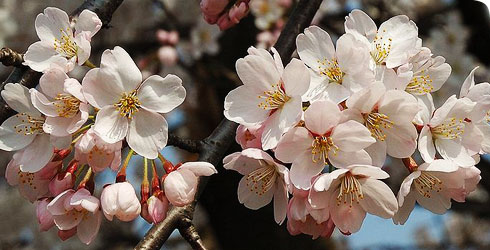Common species
Despite all the concern about disappearing species there are still many common ones. These often play a vital role in balancing ecosystems and it is important that we protect their habitats to ensure they remain abundant.
For example the devil's coach horse beetle, Ocypus olens, is a beneficial insect. Its diet ensures that organic matter is broken down and nutrients are returned to the food chain and the soil.
Find out about some of the common species studied by Museum scientists that play an important role in their ecosystems and maintaining our environments.
-

Allolobophora chlorotica (green worm) - 27/01/2010
Learn more about the green worm, Allolobophora chlorotica, an earthworm that comes in 2 colours, green and pink. Find out what you can do to help scientists discover more about this species.
-

Cercomonas clavideferens - 22/04/2010
Cercomonas clavideferens are single celled organisms that can only be seen under a powerful microscope and are thought to be found everywhere in the world. Cercomonas species are believed to be among the commonest protozoans eating bacteria in soils and freshwater habitats. Therefore they are likely to be extremely important in microbial food webs, on which all other life depends. Find out more.
-

Garrulus glandarius - 10/04/2010
The Eurasian jay (Garrulus glandarius) is a well known, adaptable and successful species. The jay is one of the most colourful members of the crow family and has a widespread distribution. Acorns are a staple food for jays and the species has an intensive process of collecting, hiding and storing them. Find out more about this species.
-

Ilex aquifolium (holly) - 25/12/2010
Holly has for centuries been used to decorate houses and churches at Christmas. Ilex aquifolium is 1 of 400 holly species. It’s an evergreen tree that grows up to 15 metres tall, with waxy, spiky leaves, and characteristic red berries. Read on to find out more about this English holly and the folklore that surrounds it.
-

Ocypus olens (devil’s coach horse) - 20/01/2010
The devil's coach horse beetle is a nocturnal predator recognised by its threatening posture. It has a rather foul defense mechanism, producing an unpleasant smelling chemical and even excreting fecal fluid. Find out more about the UK's largest rove beetle and why it is a beneficial insect.
-

Phytomyza ilicis (holly leaf-miner) - 27/12/2010
The holly leaf-miner (Phytomyza ilicis) is what its name suggests, a miner of holly leaves. The adult of the species is a fly and its larvae feed in holly leaves, forming characteristic blotch mines, which cause aesthetic damage and weaken some young plants. Find out more about this fly and where you might spot its larva’s tell-tale mines.
-

Prunus serrulata (Japanese flowering cherry) - 15/04/2010
The Japanese flowering cherry, Prunus serrulata, is a well known ornamental tree that produces masses of blossom, making it an icon of spring. Prunus serrulata originates from across Asia with cultivars planted throughout Europe and North America. Find out more about this species.
-

Solanum stoloniferum - 04/02/2010
Solanum stoloniferum is an edible common wild potato from the USA and Mexico that tastes like sweet chestnut. Find out more about how Solanum stoloniferum is used for food in USA and by the Tarahumara Indians in the Chihuahua, Mexico
-

Suricata suricatta (meerkat) - 10/12/2010
Meerkats are small, sociable mammals which are found across southern Africa. They live in family groups called mobs where individuals co-operate to rear their young, protect against predators and defend their territory. Explore the intricacies of their social interactions and discover when young males form ‘roving parties’, what they eat and how they defend themselves.
-

Salicornia dolichostachya - 09/12/2010
The long-spiked glasswort, Salicornia dolichostachya, plays a key role in establishing salt marshes. It resembles a cactus, and like most plants that grow where water is scarce, it is highly adapted to its extreme environment. Discover how this plant manages to live in salty, water-logged mud, and how its presence helps other plants establish themselves.
